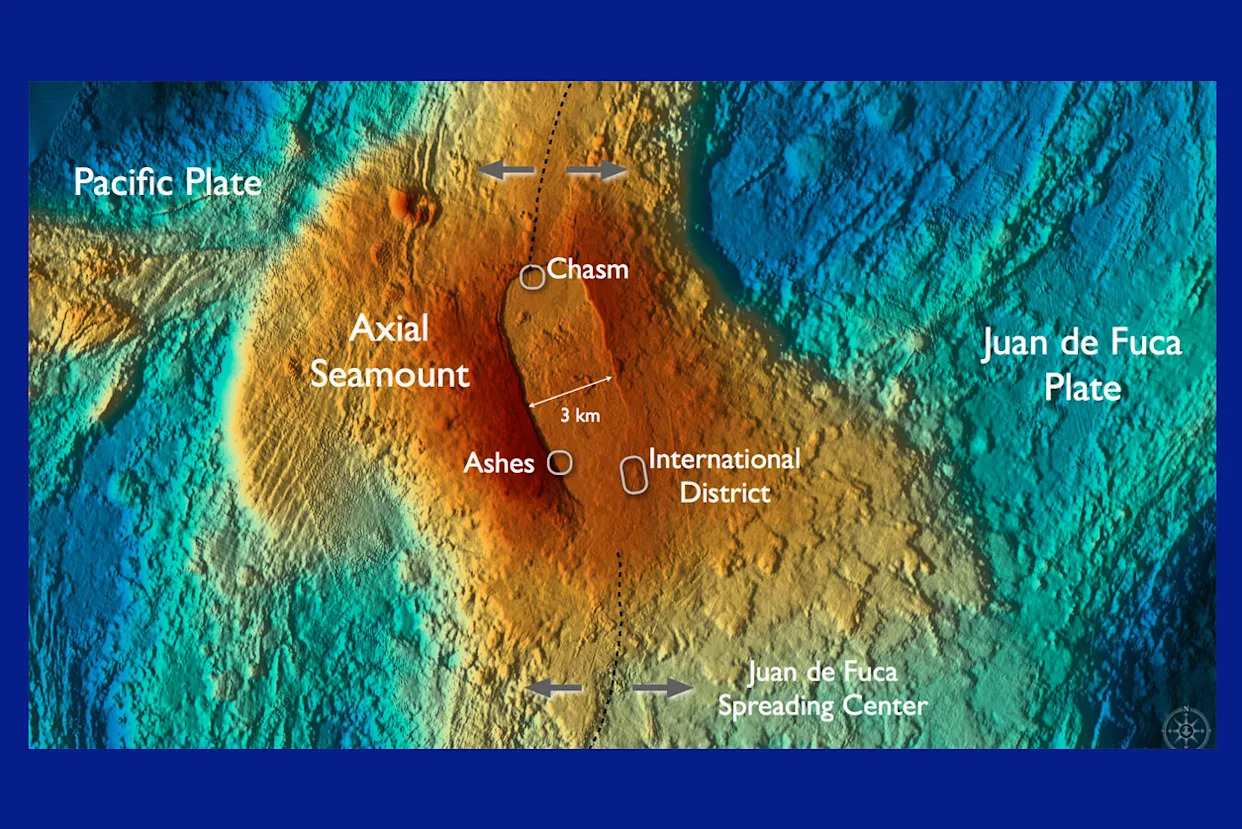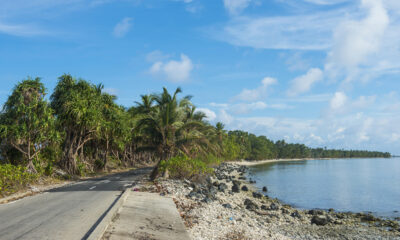Science
Researchers Monitor Potential Eruption of Oregon’s Underwater Volcano

An underwater volcano approximately 300 miles off the coast of Oregon, known as the Axial Seamount, is under close observation by volcanologists who suggest it could erupt by the end of the year. However, they emphasize that the situation does not appear to be imminent. Situated about 4,900 feet beneath the Pacific Ocean surface along the Juan de Fuca Ridge, Axial Seamount is the most active submarine volcano in the northeast Pacific.
In the past three decades, three significant eruptions have occurred at Axial Seamount—in 1998, 2011, and 2015. Researchers Bill Chadwick from Oregon State University and Scott Nooner from the University of North Carolina at Wilmington have been closely monitoring its activity. “Our forecast of an eruption at Axial Seamount by the end of the year still stands, but I have to say nothing looks imminent,” Chadwick stated during a recent interview.
Volcanic Activity and Threat Assessment
The U.S. Geological Survey (USGS) indicates that the depth of Axial Seamount, combined with its relatively gentle lava flow style, mitigates any serious threats to human life, maritime activities, or property. “For the size of eruptions we’ve seen in the last 20 years, if you were on top of it on a boat, you would never know it,” Chadwick explained.
Despite the lack of immediate danger, researchers are keen to understand how underwater eruptions occur, as this knowledge could improve forecasting models for terrestrial volcanoes.
The potential for an eruption this year is linked to an increase in inflation at the volcano, suggesting that magma is accumulating below the seafloor. According to Chadwick, inflation levels reached those observed prior to the 2015 eruption as early as January 2023. Nevertheless, he noted that the rate of inflation has been gradually decreasing since then.
Seismic Monitoring and Future Predictions
In addition to monitoring inflation, researchers track seismic activity around Axial Seamount using instruments and cables extending from the U.S. coastline. In June 2023 alone, over 2,000 earthquakes were recorded near the volcano within a single day, indicating heightened geological activity that could precede an eruption.
Furthermore, a tsunami wave triggered by an 8.8 magnitude earthquake near Russia’s Kamchatka Peninsula activated automated alerts designed to signal potential eruptions. Chadwick clarified that while this event generated alerts, it was not indicative of an actual volcanic eruption.
“We can only wait and see,” Chadwick remarked, “but nothing seems imminent at the moment since the rate of unrest keeps wavering.” He acknowledged the uncertainty surrounding the exact conditions required for the next eruption, but emphasized the hope that ongoing monitoring will shed light on this complex process.
As the situation develops, researchers remain vigilant and committed to understanding the behavior of this underwater volcano, which not only poses minimal risk but also holds significant scientific potential.
-

 Technology5 months ago
Technology5 months agoDiscover the Top 10 Calorie Counting Apps of 2025
-

 Health2 months ago
Health2 months agoBella Hadid Shares Health Update After Treatment for Lyme Disease
-

 Health3 months ago
Health3 months agoErin Bates Shares Recovery Update Following Sepsis Complications
-

 Technology4 months ago
Technology4 months agoDiscover How to Reverse Image Search Using ChatGPT Effortlessly
-

 Technology1 month ago
Technology1 month agoDiscover 2025’s Top GPUs for Exceptional 4K Gaming Performance
-

 Technology2 months ago
Technology2 months agoElectric Moto Influencer Surronster Arrested in Tijuana
-

 Technology5 months ago
Technology5 months agoMeta Initiates $60B AI Data Center Expansion, Starting in Ohio
-

 Technology5 months ago
Technology5 months agoRecovering a Suspended TikTok Account: A Step-by-Step Guide
-

 Health4 months ago
Health4 months agoTested: Rab Firewall Mountain Jacket Survives Harsh Conditions
-

 Lifestyle5 months ago
Lifestyle5 months agoBelton Family Reunites After Daughter Survives Hill Country Floods
-

 Technology4 months ago
Technology4 months agoHarmonic Launches AI Chatbot App to Transform Mathematical Reasoning
-

 Technology3 months ago
Technology3 months agoUncovering the Top Five Most Challenging Motorcycles to Ride





















